Is hydrogen the future power scource for the marine industry?
The Energy Observer (EODev) project is basically a floating experimental renewable energy laboratory which has been circumnavigating the world. Based on this practical experience the EODev team have been advocating a smart combination of renewable energies such as solar combined with batteries. They claim that this works most efficiently in combination with hydrogen fuel cells. The hydrogen is produced by electrolysing sea water using the solar produced clean energy and stored onboard in special high-pressure tanks.
Already it seems that some other leisure craft producers are following the same hydrogen / electric combination concept, with some innovative models coming to market and being promoted as zero emission, long range luxury cruising yachts.
One example is the Aquon One, a Swiss designed and engineered 19.5 metre power catamaran, which resulted from the work of a collaborative development team of multi-disciplined specialists.
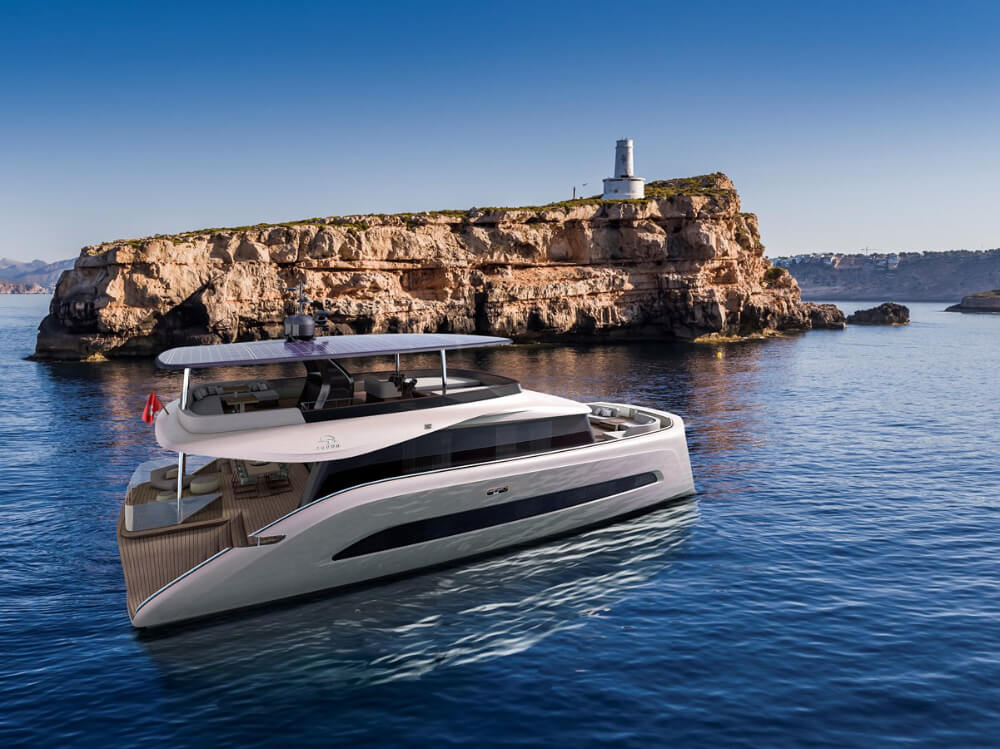
Her rooftop is completely covered with 64m2 of monocrystalline photovoltaic panels which convert sunlight to electricity, producing up to 75 kWh/day. This clean energy is used to charge her lithium-Ion batteries, and in electrolysis to separate desalinated sea water into oxygen (O) and hydrogen (H2) gas. The H2 is compressed to 300 bar (4,500 psi) and stored in onboard tanks.
With a displacement of 30 tons, the vessel is driven by 2 x 100 kW electric motors, one on each hull. These can be powered from the batteries, or from electricity produced through a hydrogen driven fuel cell. With a top speed of 16 knots, the builders claim that she can cruise at 8 knots with an unlimited range, providing there is enough sunlight.

Another relatively new range of zero emission boats comes from Alva Yachts, a German brand offering a choice of sustainable catamarans, sailing yachts and luxury houseboats. Their Ocean Eco 60 (18.4 m) and Ocean Eco 90 (27.5 m) models have been designed and built specifically for electric propulsion with a sunroof structure that maximises the available space for solar panels. These can generate up to 40 kW per day of power from the sun on the larger model.
The full electric version of the Ocean Eco 90 comes with up to 2 x 500 kW gearless electric drives and 2 x 100 kVA DC generators. She has a potentially unlimited range at 4 to 5 knots, and up to 110 NM at 7 knots. There is also an optional hydrogen fuel cell with hydrogen storage tanks as a range extender, and even a kite for harnessing the wind. So, every possible renewable energy option for the owner who wants to cruise as far as possible with zero emissions.
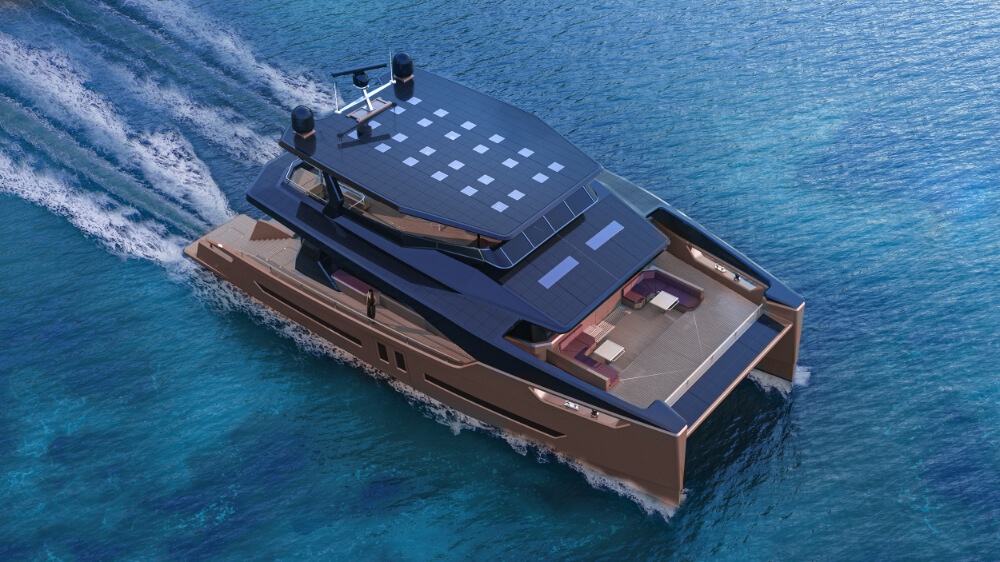
At the recent Cannes Boat Show, French builder Hynova unveiled its new hydrogen-powered Hypernova 42. Designed by Hynova founder and president Chloé Zaied, the 42 is claimed to be the first model to be produced in series using hydrogen stored onboard to navigate without emitting CO2, NOx gases, noise pollution, odours, or risk of hydrogen leakage. With a capacity for 12 passengers, the 42 will be equipped with the REXH2 (Range Extender Hydrogen) from EODev.
EODev’s generation 2 electro-hydrogen solution REXH2 delivers 70kW, combined with 44kWh batteries (the number of which depends on the requested configuration). A silent, zero-emissions power generator, the REXH2 uses PEM fuel cell technology with hydrogen and only ejects water and heat.
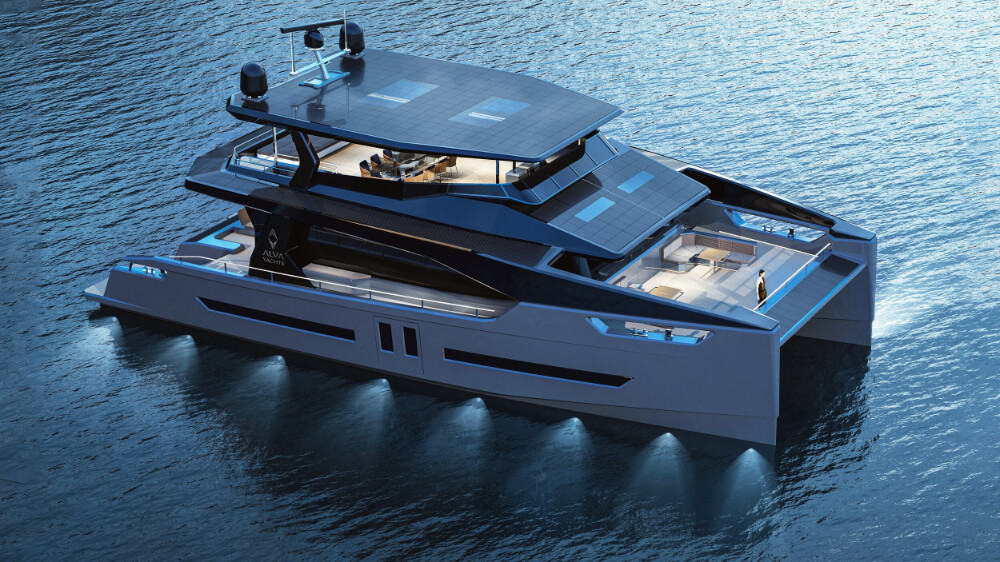
The 42 models will be available in three ranges – Sport, offering more performance; Explorer with greater autonomy; and Unique, which features luxury finishes.
The New Era Hynova 40 demonstrator achieved autonomy of 8 hours at a speed of 12kts – it can reach a maximum speed of 26kts – using three hydrogen cylinders and three batteries. It recharges in a few minutes when back at port.
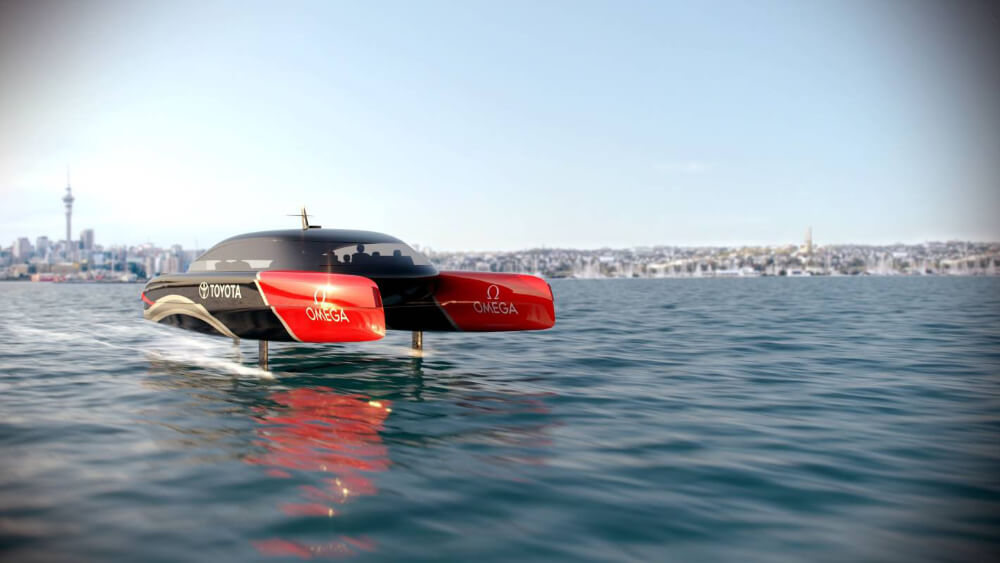
AMERICA’S CUP CHASE BOATS PLANNING TO SWITCH TO HYDROGEN
Just recently it was announced that Emirates Team New Zealand, the defender going into the 37th America’s Cup, are developing a foiling hydrogen powered chase boat which they would like to have ready for the next AC series.
The details released so far, show a sleek design featuring electric motors on the bottom of the foils with batteries, hydrogen fuel cells and cylindrical storage tanks all built into a streamlined composite hull. The renderings have the Toyota name on the side of the boat, which seems to suggest that the fuel cell technology could possibly be based on the car manufacturer’s proven Mirai road vehicle concept.
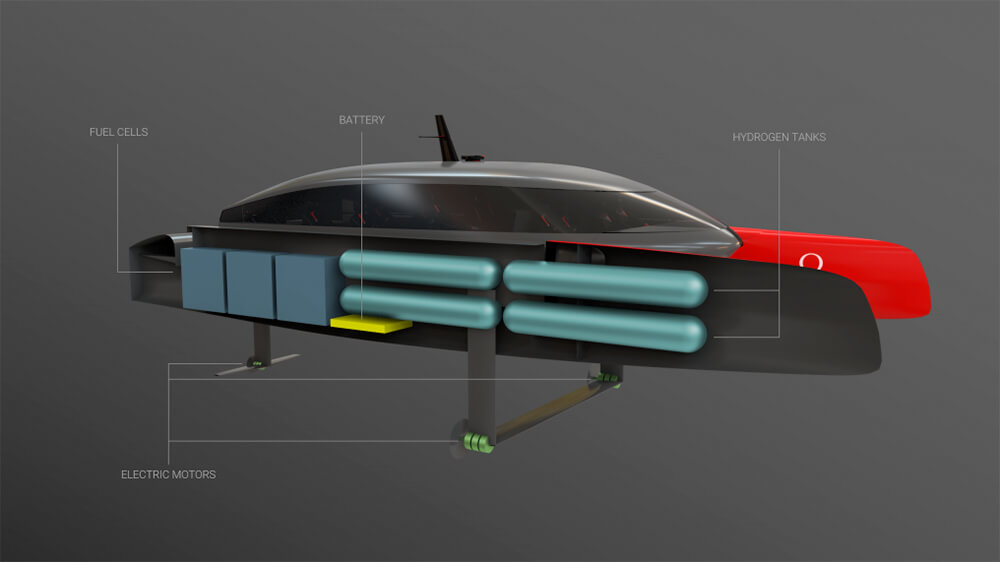
Apparently Sir Ben Ainslie the skipper of INEOS Team UK was supportive of the idea to make all the America’s Cup chase boats hydrogen powered in future as he said: “With so much investment in hydrogen across the world, shifting to foiling chase boats, powered by hydrogen could well prove to be a sustainable and practical solution for the future of the marine industry, while supporting the AC75’s which are reaching speeds in excess of 50 knots.”
Engine manufacturers upping their sustainability game.
At the Cannes Boat Show just recently, an agreement was signed between Italian superyacht builder Ferretti and MTU (part of Rolls Royce Power Systems) to jointly develop a low emission custom engineered hybrid propulsion system for future new builds.

A fully integrated MTU propulsion solution will be provided with an output of approximately 1,432 kilowatts per powertrain, comprising two 12-cylinder Series 2000 M97 diesel engines, electric drive modules, gearboxes, batteries, control and monitoring systems, plus other electronic components and a Selective Catalytic Reduction system (SCR) for compliance with IMO III regulations.
Andreas Schell, CEO of Rolls Royce Power Systems said; “Customers in the yacht industry are increasingly asking for sustainable solutions and we are vehemently supporting this course with our sustainability programmed, NetZero at Power Systems.”

The customisable modular marine options are built around two powertrain models available for yachts: an inline 6 cylinder, or a V12, offering a power delivery range of 290 to 1,471 kilowatts (394 – 2,000 hp) and a rated speed from 1,800 to 2,300 rpm.

The internal combustion engines are Stage V compliant and can be coupled with electric motors with a rated power of 184 and 368 kilowatts. The E-motor can be fully separated from the diesel engine by an electromagnetic clutch, and it can be used as a drive motor and as a generator in order to produce electricity. The batteries in the system can be charged from either shore connection, onboard generation, main engines or solar cells, and can have an energy capacity of up to 250 kWh.




